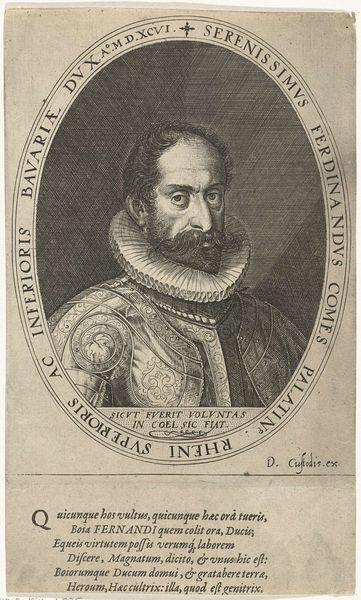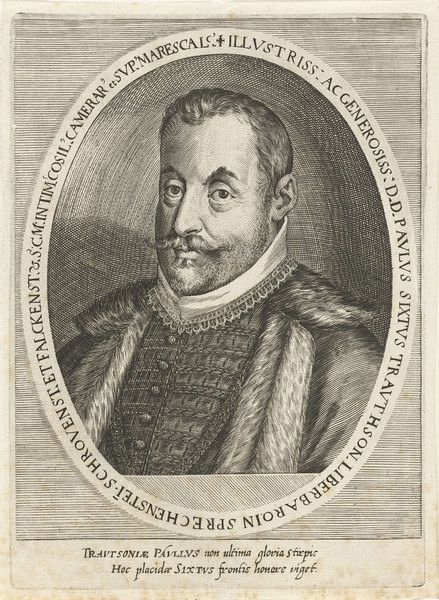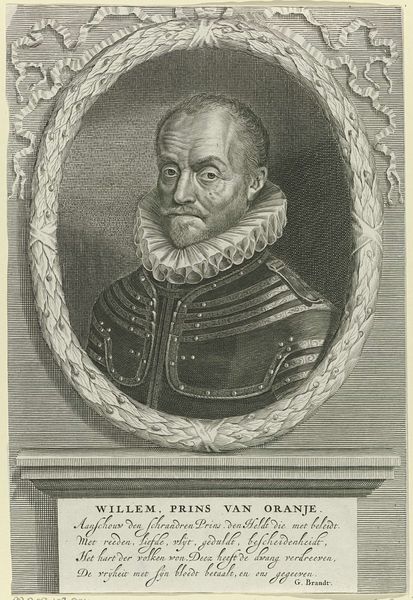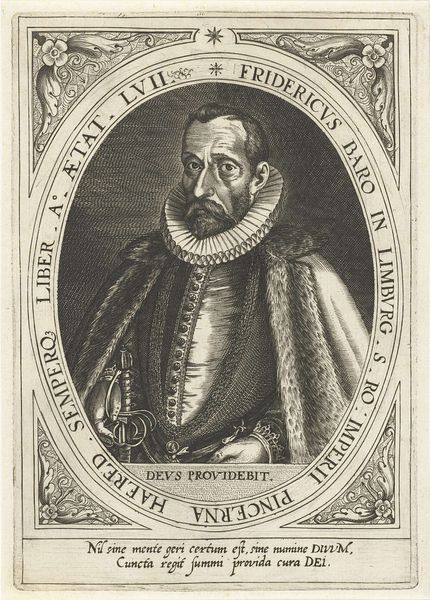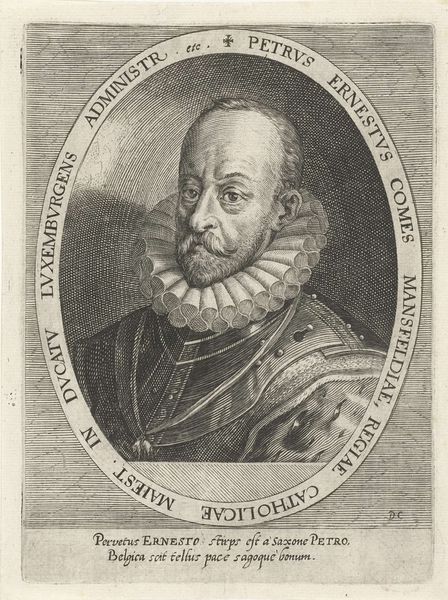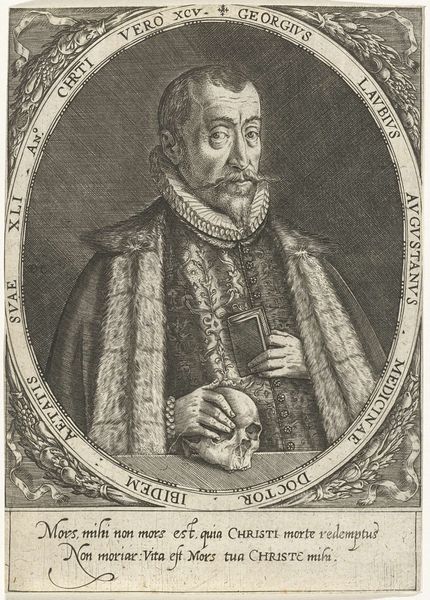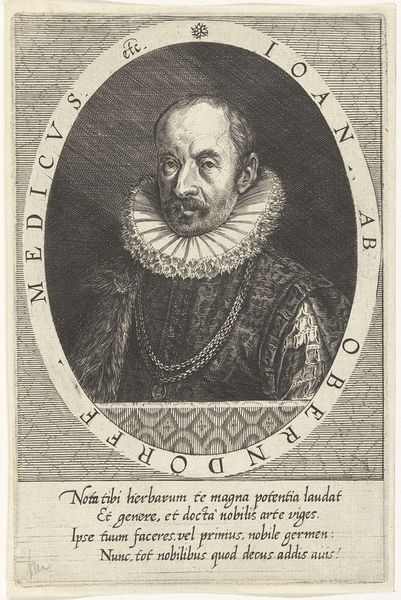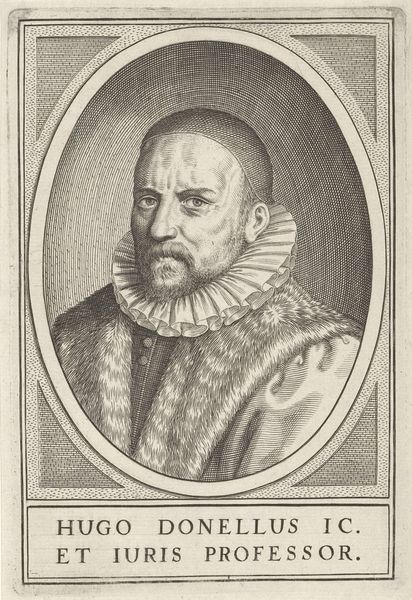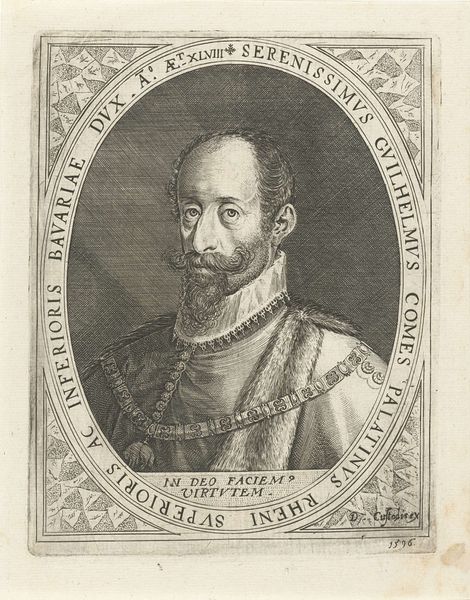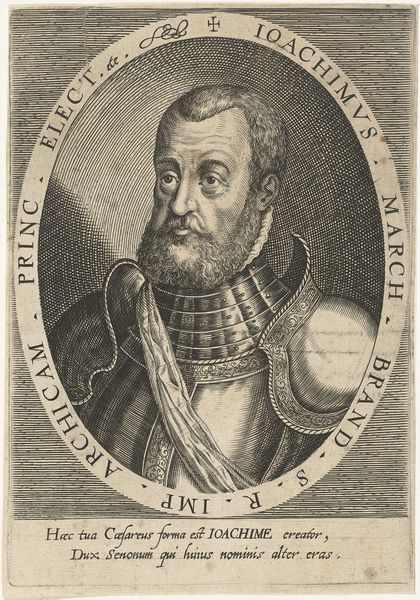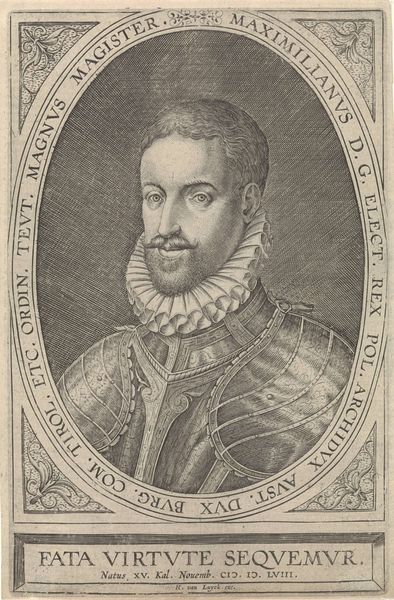
engraving
#
portrait
#
old engraving style
#
mannerism
#
history-painting
#
engraving
Dimensions: height 152 mm, width 115 mm
Copyright: Rijks Museum: Open Domain
Curator: This engraving, residing here at the Rijksmuseum, presents a “Portret van Ferdinand van Beieren,” dating back to somewhere between 1560 and 1600. It’s an intaglio print executed by Johann Sadeler I. Editor: The density of line work almost gives the portrait a feeling of brooding weightiness. It certainly captures my attention right away. Curator: The application of cross-hatching here allows for significant depth and variation in tone. Look at the interplay of light and shadow, especially how the density shifts to define the planes of the face and armor. Semiotically, what does the darkness itself suggest? Editor: This imagery circulated widely, imbuing its subject with particular attributes and associations tied to power. Beyond the visual impact, consider the social function of such portraits. They visually asserted rank during a politically fraught era, likely influencing how Ferdinand was perceived and wielded influence. Curator: Absolutely. We must note the meticulous rendering of textures. The stark white of the ruff contrasts with the detailed engraving on the armor, showcasing Sadeler's virtuosity. Do these formal contrasts evoke certain oppositions to you, such as purity versus military might? Editor: Furthermore, what's so fascinating about these formal elements are not only in what they reveal, but in what they obscure. Who controlled the image and its narrative? This portrait isn't just about Ferdinand's presence; it's a statement orchestrated, distributed and consumed within a complex social theatre of political power. Curator: Precisely. And consider the carefully inscribed oval border. The lettering itself, its precise placement… it frames and elevates Ferdinand but also subtly imprisons him within the conventions of the print itself. This boundary dictates how we are to perceive him. Editor: Indeed. I am reminded that artworks don’t simply reflect the world but also shape and construct it, molding perceptions and perpetuating beliefs for the audiences of their time. Curator: A persuasive thought. Examining the aesthetic qualities alone deepens appreciation of its artistic intention. Editor: Understanding its historical agency offers a vital entry point.
Comments
No comments
Be the first to comment and join the conversation on the ultimate creative platform.
